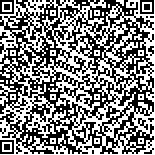| 潘越鹏,王先萍,曹培伟,等.多模态影像技术对乳腺导管原位癌与导管原位癌伴微浸润的鉴别诊断价值[J].肿瘤学杂志,2025,31(4):336-345. |
| 多模态影像技术对乳腺导管原位癌与导管原位癌伴微浸润的鉴别诊断价值 |
| Differential Diagnosis of Breast Ductal Carcinoma in Situ and Ductal Carcinoma in Situ with Microinvasion by Multimodal Imaging Technology |
| 投稿时间:2025-01-06 |
| DOI:10.11735/j.issn.1671-170X.2025.04.B009 |
|
 |
| 中文关键词: 乳腺肿瘤 X线摄影 磁共振成像 超声 导管原位癌 微浸润 鉴别诊断 |
| 英文关键词:breast neoplasms mammography magnetic resonance imaging ultrasound ductal carcinoma in situ microinvasion differential diagnosis |
| 基金项目:浙江省自然科学基金(LTGY23H180007);浙江省医药卫生科技计划项目(2023KY070) |
|
| 摘要点击次数: 102 |
| 全文下载次数: 47 |
| 中文摘要: |
| 摘 要:[目的] 比较乳腺导管原位癌(ductal carcinoma in situ,DCIS)与乳腺导管原位癌伴微浸润(ductal carcinoma in situ with microinvasion,DCISM)的X线摄影、超声和磁共振成像(magnetic resonance imaging,MRI)的影像及临床特征,分析三者对DCIS与DCISM的鉴别诊断价值。[方法] 回顾性分析浙江省肿瘤医院经手术病理证实的147例DCIS(n=83)和DCISM(n=64)患者,共151个病灶(DCIS 87个,DCISM 64个),术前均行乳腺X线摄影、超声和MRI增强检查。分析两组患者的临床及影像学特征。运用单因素及多因素Logistic回归分析鉴别DCIS与DCISM的预测因素,并分别构建临床模型、影像特征、联合诊断模型。采用受试者工作特征(receiver operating characteristic,ROC)曲线评估各模型的诊断效能。[结果] 在X线摄影中,DCIS主要表现为团簇状分布钙化(38.6%),DCISM主要表现为区域性(42.0%)及段样分布钙化(38.0%)(P=0.014)。在超声中,DCISM非肿块病变(31.2%)比例明显高于DCIS(14.9%)(P=0.014)。在MRI中,DCISM组段样非肿块样强化(non-mass enhancement,NME)(85.1%)患者明显多于DCIS组(56.9%)(P=0.002)。DCISM灶周水肿及血管增粗比例高于DCIS(P=0.003)。多因素分析显示,核级别(P=0.039)及超声肿块型病灶(P=0.043)是DCIS与DCISM鉴别诊断的独立预测因子。临床模型、影像模型及联合诊断模型的ROC曲线下面积(area under the curve,AUC)分别为0.681[95%置信区间(confidence interval,CI):0.596~0.766]、0.793(95%CI:0.722~0.863)、0.841(95%CI:0.780~0.902)。[结论] 核级别及B超肿块型病灶是DCIS与DCISM鉴别诊断的独立预测因子。X线摄影结合MRI可以显著提高DCIS与DCISM的鉴别诊断效能。临床与影像模型对鉴别DCIS与DCISM有一定的诊断价值,联合模型的诊断价值更高。 |
| 英文摘要: |
| Abstract:[Objective] To compare the imaging and clinical features of breast ductal carcinoma in situ(DCIS) and breast ductal carcinoma in situ with microinvasion(DCISM) with mammography, ultrasound and magnetic resonance imaging(MRI), in order to improve the accurate differential diagnosis of DCIS and DCISM. [Methods] Clinicopathological and imaging data of 147 patients with DCIS (n=83) and DCISM (n=64) (151 lesions: 87 for DCIS and 64 for DCISM) confirmed by surgery and pathology at Zhejiang Cancer Hospital, were retrospecively analyzed. All patients underwent, mammography and MRI enhancement before operation. The clinical and imaging features of the two groups were analyzed. Univariate and multivariate Logistic regression analysis were used to identify the predictors of DCIS and DCISM, and clinical models, imaging features, and combined diagnostic models were constructed respectively. The diagnostic efficacy of each model were evaluated by the receiver operating characteristic (ROC) curve. [Results] In mammography, DCIS mainly showed clustered calcification (38.6%), while DCISM mainly showed regional calcification (42.0%) and segmental calcification (38.0%)(P=0.014). The proportion of non-mass lesions in DCISM (31.2%) was higher than that in DCIS (14.9%) (P=0.014). In MRI, the proportion of patients with segment-likes non-mass enhancement(NME) in the DCISM group (85.1%) was significantly higher than that in the DCIS group(56.9%)(P=0.002). The proportion of patients with perifocal edema and vascular thickening in DCISM was higher than that in DCIS (P=0.003). Multivariate analysis showed that nuclear grade (P=0.039) and ultrasound mass type lesions (P=0.043) were independent predictive factors for the differential diagnosis between DCIS and DCISM. The AUC values of clinical model, imaging model and combined diagnosis model were 0.681[95%confidence interval(CI):0.596~0.766], 0.793(95%CI:0.722~0.863) and 0.841(95%CI:0.780~0.902), respectively. [Conclusion] Nuclear grade and ultrasound mass lesions are independent predictors of differential diagnosis of DCIS and DCISM. The combination of mammography and MRI can significantly improve the differential diagnosis efficiency of DCIS and DCISM. The clinical and imaging models have certain diagnostic value for differentiating DCIS from DCISM, and the combined model established by the two has higher diagnostic value. |
|
在线阅读
查看全文 查看/发表评论 下载PDF阅读器 |